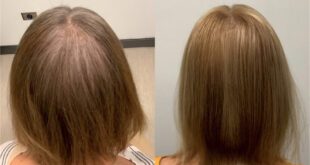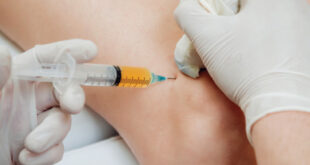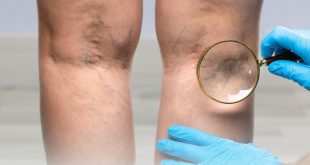by Dr. Khan
 Continuing with the back pain we will start with the common afflictions of the back starting from the ailments which present at the skin to those which affect the bones. However one important factor to keep in mind is that where a disease presents itself may be far apart from where the roots of the illness are. It is especially true for the skin which is the largest human organ and is a window to many of our maladies.
Continuing with the back pain we will start with the common afflictions of the back starting from the ailments which present at the skin to those which affect the bones. However one important factor to keep in mind is that where a disease presents itself may be far apart from where the roots of the illness are. It is especially true for the skin which is the largest human organ and is a window to many of our maladies.
One should neither be ignorant or nonchalant about new lesions that present on our skin nor should one be hypochondriac to every little blemish or beauty spot.
The disease we are going to discuss today is an embodiment to both the facts I have mentioned above, first, which it presents on the skin while it seeds deep down in the nerves. Secondly, if diligently identified and a timely action is taken, it may (may) prevent us from a lifelong agony. This disease is so prevalent that most people have heard of it, seen someone who has had it, or have had it themselves. The layman and non professional name of this illness is
Shingles and the medical name is Herpes zoster. The knowledge of both names is germane to the disease presentation thus worth having a knowledge of. Word shingles takes its origin from the Latin word cingulum which means a girdle; the word zoster takes its origin from Greek meaning same the girdle and the word herpes also a Greek origin meaning creeping. It is called so because it mostly makes its debut creeping like a serpent in the form of a girdle on the skin making blisters along its path. The path which is the path of a nerve.
Statistics:
1 to 3 in every 1000 among young and 4 to 12 people in a 1000 in older age group above 65.
About 1 million cases of shingles occur in the United States each year.
The cause; Shingles, or herpes zoster, is caused by the Varicella zoster virus, the same virus that also causes chickenpox.
The infection:
once someone is infected with the virus or has a vaccine for chickenpox , the virus finds it self a home around nerve cell clusters in the head and along the spinal nerves of the infected person.
It could be many a moons and many a years after the initial infection (or vaccination), the virus can be awakened from its incubation reactivated and announce its presence.
Symptoms:
The first symptoms of shingles are often Fever, headache, and achiness pain, burning, or itching along a band ( girdle) of skin on one side of the body where the virus has been activated in the cluster of nerves.
Commonly involved nerves:
mid back, (thoracic ) (53%)
Neck (cervical ) (20%), and ( face) trigeminal (15%) and low back (lumbosacral ) (11%).
Progress:
Typically, blisters crust over and scab within
2-3 weeks and pain goes away and soon one forgets about it. But sometimes it can end up with complications.
Complications:
Post-herpetic neuralgia; neuralgia is pain caused by the involvement of nerves.
This is the persistence of pain after a month of onset of herpes zoster. It is the commonest side effect seen in elderly patients and can sometimes be extremely painful and debilitating.
Complications like cranial neuropathies, polyneuritis, myelitis, aseptic meningitis, or partial facial paralysis occur due to the involvement of the nervous system.
Disseminated zoster is defined as more than twenty skin lesions developing outside the primarily affected area or dermatomes directly adjacent to it. Besides the skin, other organs may also be affected, causing hepatitis or encephalitis making this condition potentially lethal.
Transmission
A person with shingles cannot give shingles to someone else. However, a person with shingles can transmit Varicella zoster to a person who is not immune to the virus. In that case, the person would develop chickenpox, not shingles.
Transmission occurs via the fluid from the shingles blisters. A person is infectious from the time the blisters appear to the time the blisters crust over and no longer contain fluid. Accordingly, people with shingles blisters are advised to avoid bringing blistered areas in contact with others.
Treatment and Care
Certain antiviral medications can reduce the severity and duration of shingles when they are taken soon after symptom onset.
Care for shingles usually includes use of pain medications and topical treatments for blistered areas.
Available Vaccines
most Americans age 50 and older are recommended to get Zoster Vaccine which reduces risk of shingles and post-herpetic neuralgia by more than 96%.
Dr. Khan is an Anesthesiologist specializing in pain management. He established his interventional practice in the Lakeland area in 1997.
Dr. Khan completed his surgical training at the Medical College of Ohio, Surgical & Anesthesiology at Stonybrook New York, Acute & Chronic Interventional Pain Management Fellowship at New York Medical College, and Critical Care Fellowship at USF.
He is Board Certified in Anesthesia, Critical Care, and Pain Management.
During the last 15 years he has personally seen over 100,000 patients and performed over 50,000 different Interventional Pain procedures without complication and with good outcomes.
Please call (863) 682 – PAIN to schedule your appointment today!(863-682-7246)
Interventional Pain
541 S. Florida Ave.
Lakeland, FL 33801
Phone: (863) 682 – PAIN
Fax: (863) 682 – 5566
PAINMEDINC.COM
Check Also
The Mighty Maestro: Bob “Mighty Mite” Toski’s Enduring Legacy at 98
In the warm glow of a spring evening in Delray Beach, Florida, a remarkable celebration …
 Central Florida Health and Wellness Magazine Health and Wellness Articles of the Villages
Central Florida Health and Wellness Magazine Health and Wellness Articles of the Villages



